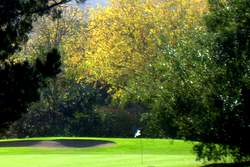Let's Create A Better World!
Books/Writings
Finished Books

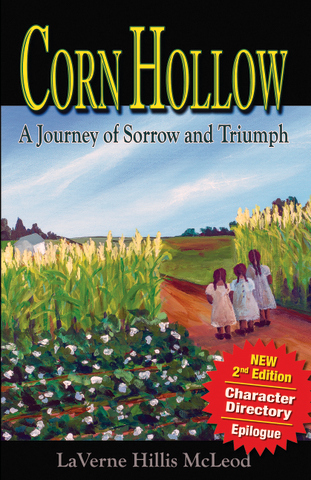
My First Book – Corn Hollow
It’s the “New Second Edition” with a Character Directory and an Epilogue of stories by others who have experienced racial discriminations. This book is as it is subtitled, A Journey of Sorrow and Triumph, an African American historical fiction taking place in the South from the early 1950’s-early 1970’s. During the rise of the Civil Rights Movement in America, the protagonist, Tamara, searches for answers to questions adults refused to answer. Dramatic Book Presentations and Book Signings are available upon request.
A Non-Fiction
Now that Corn Hollow and The Crossroads of Social and Climate Justice have been published, I have other books in my think tank.
Here’s what I am contemplating- a golf book possibly about the struggles of early African American Golfers. Still brewing!
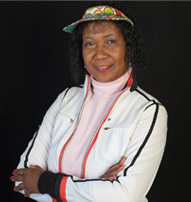
A Narrative Fiction: This is an elder care fiction as told through the voice of the Trustee who narrates the story. This novel is based on the experience of many who have told their stories of sainthood and their nightmares of caring for an elderly relative. Having experienced this type of responsibility, the author embellished bits and pieces of trials and successes, thus creating a fiction.
More than often, tales of elder care are clothed with a layer of some form of dementia, making the relationship slightly complicated.
I see this novel bound by love as a brewing drama, scene by scene, entwining lucid and disordered thoughts to a closed curtain, in one long sitting.
Non-Fiction: This is a coffee table picture book displaying visions created by nature. These images are exposed in and around Big Sur, CA. They are like none other for they are created by nature and seen through random stimulus, often moving, yet most are stationary.
There is a branch of psychology that best places these visions to a definitive term called “pareidolia.” In other words, what do you see if it is not a vision in a dream or a supernatural state as a revelation? Examples are found in clouds, in bark of trees, in rocks along the sea shore and in many other places.
Allow me to take you on this photographic journey in a magnificent land often referred to as a mystical place that attracts many from around the world. Feel free to enjoy, ponder over, or perhaps attach some meaning to it.
How-To: The muse has struck in the realm of all my past and current event planning. This includes fundraising activities. I have conjured up a type of workbook for those interested in helping their organization to raise funds. Creatively speaking, a “fun” fund raiser. Schools will particularly benefit from this guide. And I feel the best guide of all is to take what one has conceived and use this book to expand on original ideas and add new ones.
Published Articles
Please enjoy a series of eight articles that were previously published in SurLady Golf newsletters. Also take pleasure in reading four additional articles that were previously published in Monterey County Magazine.
Reprints©copyright and written by LaVerne McLeod
What’s Exciting About Driving Your Ball from the Tee?
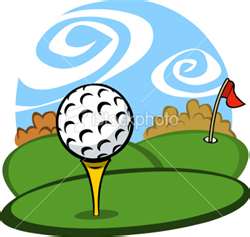 Most of us golfers love driving the ball from the tee. Some of us rush to the range and start driving even before warming up or working up to this number one club.
Most of us golfers love driving the ball from the tee. Some of us rush to the range and start driving even before warming up or working up to this number one club.
This article focuses on the joyfulness of the drive, particularly when this shot is agreeably executed. After asking several golfers this question about excitement, this is what they came up with.
Just about every response marked the event as an opportunity for letting go from personal concerns, schedules, and work. One golfer stated it eloquently as “letting all the noise in [her] head fall away, taking a breath, letting it go and swinging.”
The florid descriptions, from the tee box to impact, were passionately expressed. “There is nothing sweeter than standing at the tee box, looking across at the long fairway ahead with big headed driver in hand, addressing the ball, tall in its tee. The sweet sound the ball meeting metal makes, the distance the ball travels, the long arch that sends the ball almost out of sight. Nothing in golf is like it.”
“There is nothing sweeter than standing at the tee box, looking across at the long fairway ahead with big headed driver in hand, addressing the ball, tall in its tee. The sweet sound the ball meeting metal makes, the distance the ball travels, the long arch that sends the ball almost out of sight. Nothing in golf is like it.”
“Another golfer cheerfully explained his version of driving invigoration. “I love setting up over a tee shot and feeling completely comfortable, the back swing … effortless with perfect tempo. The downswing… with perfect tempo and balance, the ball explodes off the club face… and is finished with a high follow through. God, that feels so good.”
Also, it was no surprise that most golfers said it was power that made them excited about driving. For one young golfer, just the thought of taking his clubs from his car and thinking about driving 200 plus yards made him feel powerful and thus successful. On the other hand, one lady articulated this power as “one chance of doing it right.”
Whether it is power, letting go, feeling the thrill or some other reason that we connect to driving, we keep coming back for more of it. One golfer summed it up so well: “Hitting my driver long and straight to my target is like a string attached to the ball reeling out from my chest… a very satisfying sensation.” Weather permitting; enjoy the good feeling the next time you are on the tee!
Copyright© LaVerneMcLeod assisted with compiled opinions from recreational & avid golfers. Feb. 2011
Winter Golf
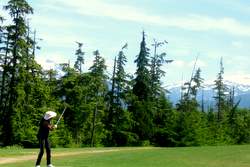 I had a unique “winter golf” experience in Alaska this last summer in July. It was not the particular northern hemisphere type of ice and snow that covered the golf courses. But rather, it was similar to what I am experiencing now in California, which is considered winter golf. This includes cool temperatures and rainy weather.
I had a unique “winter golf” experience in Alaska this last summer in July. It was not the particular northern hemisphere type of ice and snow that covered the golf courses. But rather, it was similar to what I am experiencing now in California, which is considered winter golf. This includes cool temperatures and rainy weather.
Since it was my first time in Alaska, I felt I couldn’t leave without knowing what was like to golf there. It had been raining heavily, the air was cool and the sun broke through. A friend took me as a guest to her local course, Muskeg Meadows.
I was told to watch where I stepped. And on some occasions it would be acceptable to wear hiking boots because this course was formed in a bog or swampy area. Grass grew around moss, ferns, and small shrubs that created a few unusual, yet scenic rough areas; an exception being the hillside fairways.
I noticed that my ball was not going a great distance even from the built-up tee boxes. Everything took more effort and time, not just because we were distracted by the bountiful borders of berries, jokes of grizzlies, and the captivating scenery. It was definitely a winter golf experience that I experienced in the summertime. Every action had a different outcome than my usual summertime golf rounds.
While some golfers might not prefer to golf in the damp cool air, others have no choice but to wait until the ice and snow thaws out and the weather gets warm. Regardless of your winter golf situation, plenty can be done during wintertime.
Try a golf-specific stretch program to keep flexible, endurance and strength training exercises, consciously eating healthy foods, practicing putts on a rug or carpet, or reading a favorite golf book.
Copyright ©LaVerne McLeod, January 2011.
What's the Difference between a Chip and a Pitch Shot?
Imagine someone stopping you right now and asking you to demonstrate a chip

and a pitch shot. What would you do? How different would these shots look?
A way to remember the difference is through a mnemonic. Wikipedia defines mnemonic as any learning technique that aids memory. Mnemonics can be verbal such as a special word used to help a person remember something but may be visual, kinesthetic or auditory. I have found mnemonics to also be humorous.
A golf class member told me her mnemonic and as I chuckled, I realized that it was very helpful as it reminds me what these two shots are. She referred to the chip shot as a “potato chip.” She also asked me what this little chip is it full of and said that a little goes a long way. Therefore chipping is playing the ball from my back foot and it rolls a long way.
She went further to say that a baseball pitcher raises his front leg up high when he’s about to throw a ball. Thus a pitch is hit from the front foot, can go up high and and then stops at a certain spot.
Others might remember pitch and chip in terms of a clock, degrees, angles of backswing or something entirely different. To add more confusion to the mix, wouldn’t you say one uses a pitching wedge to chip, rather than pitch?
The next time you are out practicing during this winter golf season, try some chip and pitch shots. You can also identify these shots by observing others as they practice.
Copyright ©LaVerne McLeod, December 2010.
Putting Speed
 I think of the word “control” whenever I hear talk about putting speed. To determine what speed to putt my ball can be challenging. After reading the green, I also have to know how hard or soft to exert my putting swing.
I think of the word “control” whenever I hear talk about putting speed. To determine what speed to putt my ball can be challenging. After reading the green, I also have to know how hard or soft to exert my putting swing.
When I go ahead and execute what I think is the best putting speed, I’ve often found that it rolls short of the pin. I should have perhaps asked myself a question beforehand. Is the point from my ball to the hole level or is the green sloping? Hitting it on the down slope I’ve found that the ball breaks even farther away from the hole. What happens when I have to putt on a slight uphill slope is yet another story.
Once the green is correctly read, I know which way to direct the putt. However, by this time I may have so many strokes into the game that impatience sets in. It is so important to practice in between my playing days and just before a round to gain more confidence in this area.
All things considered, my putting speed also changes with the condition of the greens. If it is damp, my ball moves slower. When the green is dried out, even my slight tap, especially on a downhill slope, could warrant a speeding ticket if such existed for golf.
Copyright ©LaVerne McLeod, November 2010.
Drinking Water While Golfing
The importance of drinking enough water while we are being active has been stressed to the max. Now that we are drinking it, what else should we be concerned about?
The emergence of the type of water container one uses, not the age of the

container, has re-surfaced again. This stems from the controversial 2008 study by University of Cincinnati cell biophysics professor, Dr. Belcher. His study explains that BPA (Bisphenol-A), a chemical used in making poly carbonate plastic water bottles, releases environmental estrogen when exposed to extreme heat. This also included plastic bottles that have been scrubbed and boiled. BPA was believed to disrupt the function of the endocrine system and affect reproduction and brain development.
Now in January of 2010, the (FDA) Food & Drug Administration announced its concern about BPA regarding the use of plastic bottles for children. On the other hand, the American Chemistry Council, in an unnamed study in February this year, concludes that BPA has no effects on brain development nor reproductive behaviors.
It’s really up to you to decide which water container to use. Options you might consider: being careful not to let a plastic bottle sit in the extreme heat; check if your plastic bottle is BPA Free; use a glass water bottle; or use a stainless steel water bottle.
Copyright ©LaVerne McLeod, October 26, 2010.
How to Determine the Grain of the Grass
I have, and perhaps many of you have, hit a putt without having any idea where it is going to end up. I just want it to get somewhere close to the hole. With too many strokes to putt in the hole, I am now taking a closer look at what is going on.
 Since grass is cut so short on the green, just eyeballing the lighter or darker sides of it makes it difficult to determine the grain. Even standing in the middle of the green and looking in opposite directions for a shiny (with grain) or a darker (against grain) shade of grass can be frustrating.
Since grass is cut so short on the green, just eyeballing the lighter or darker sides of it makes it difficult to determine the grain. Even standing in the middle of the green and looking in opposite directions for a shiny (with grain) or a darker (against grain) shade of grass can be frustrating.
There are times when I putt my ball and it rolls smoothly, while other times, it slows down or even stop short of the hole.
When my golf instructor explained how to determine the grain of the grass by its definition, it all seemed to make sense. What I didn’t realize is how much our natural elements play a role in determining the grain of the grass.
Copyright ©LaVerne McLeod, October 12, 2010.
October is Pink Ribbon Month
Our beautiful autumn season has arrived. Also at this time, we can focus our awareness on the cure for breast cancer.
 So when you see someone wearing pink ribbon products, clothing or its international pink ribbon symbol, it’s for the cause.
So when you see someone wearing pink ribbon products, clothing or its international pink ribbon symbol, it’s for the cause.
Nancy Goodman Brinker, whose sister, Susan G. Komen, died of breast cancer, did something about the cure. Prior to Susan’s death, Nancy promised her sister that she would find a way to speed up breast cancer research. Thus, the Susan G. Komen for the Cure Foundation was created. Rally for the Cure also supports this effort. Since the early 80’s this large charity has contributed to breast cancer research, education, and health services for women.
Through Pink Ribbon golf accessory merchandise, SurLady Golf contributes to the Cure. It seems that we all know of someone that has breast cancer, have had a mastectomy, or even lost their life because of the disease and it’s time to do something about it.
SurLady Golf offers a way for you to contribute to this research. Your purchase of SurLady Golf Pink Ribbon accessories allows SurLady Golf, via sponsoring distributors, to give back 10% of sales to breast cancer research.
[Note: this article refers to when SurLady Golf was active. It is currently inactive.]
Copyright ©LaVerne McLeod, September 28, 2010.
Bunkerue
Hitting my ball straight down the fairway and seeing it roll into a bunker is sometimes an unexpected surprise. Then there are other times that I realize that I aimed for it in hopes of going over it.
Seeing this trap, I sometimes call it “bunkerue.” This might not be your word choice as I have heard many others and I know you have as well.
choice as I have heard many others and I know you have as well.
“So you went to the beach today,” “too bad,” or the deflating voice sounds of “ahhh” can be heard from your golf friends. The feeling, of having done this well in the past and experiencing the opposite, is humbling. Nonetheless, I step down into that sand pit and test my patience while everyone is watching.
Doing the obvious of not grounding my club is easy to remember. It’s the mind chatter that tends to throw me off: how far back I need to contact the sand; questioning whether I chose the right club (lob wedge, sand wedge, my hybrid); open the club face or steepen the downswing; aim slightly to the left or right of the target,etc.
If you repeatedly get into a similar golf situation such as I have experienced, I suggest that you use the talents of a local golf course teaching pro for proper instruction. I am doing this right now by taking another golf class. Golf has taught me that it is an ongoing learning process and I love it. Don’t be afraid to ask for help.
Copyright ©LaVerne McLeod, September 14, 2010.
More Published Articles:
Written by LaVerne McLeod Published in Monterey County Magazine (Reed Silas Cripe, Publisher; Brigga Mosca, Editor)
Golf Fitness
Golf is an explosive sport requiring contorted body moves. For this reason, fitness is a necessity for men and women to help prevent shoulder, hip and lower back injuries.
It is important to build strength and power. Some specific exercises include leg forward lunges, push-ups against a wall, or one that Annika Sorenstam uses; snapping a wet towel like cracking a whip. My favorite to build arm and shoulder strength is to tape two old irons together and practice my swing. Playing basketball and taking long walks also build strength and endurance.
Core stability is important. This refers to keeping the body sturdy and still during movement in the abdominal, pelvis, lower back and diaphragm areas. Exercises that tone these areas include planks (where the abdominals are braced to maintain a straight body line through feet, hips and head), bridges, abduction or side leg lifts, thus working on all the core areas. Toning the abdomen helps to strengthens the lower back. A fun exercise is hula hooping to help balance either a right or left handed golfer by rotating the core in the opposite dominant direction.
Another integral part of golf fitness is flexibility. Without loose muscles you can easily get injured. According to the Women’s Heart Foundation, stretching should be a part of your warm-up before proceeding to more aerobic exercise routines. It’s best to start slowly without any bounce that could result in pulling a muscle. Stretch to the point of mild tension and back off if painful. Yoga is always a good choice for flexibility.
Posture and balance are fundamental to golf fitness. Good posture is a way to subtly increase and strengthen the muscles in your back and abs. Habitual or unnatural positioning can put a strain on our organs, bones, muscles and circulation. Improving balance means being less likely to get hurt and having a better range of motion. Large exercise balls are commonly used in a variety of ways to improve posture and balance.
A good cardiovascular workout helps the circulatory, respiratory and muscular systems. Walking and running are good cardiovascular exercises that help improve stamina to walk the course.
If time allows, warm-up before a round at the driving range. Start out slowly with chipping and putting before hitting long explosive drives. This, in combination with the above-mentioned exercises, can boost your club head speed and boost your short game.
Written by LaVerne McLeod, Published in Monterey County Magazine, Spring 2012,(Reed Silas Cripe, Publisher; Brigga Mosca, Editor)
It Don’t Mean a Thing
(If it Ain’t Got that Swing)
The bottom line for all golfers is this: how to perform better to lower golf scores. Recently I’ve learned a simple way to do this just by having the right tools- perfectly fit clubs-with the use of motion analysis technology. This technology is now available for golfers at Quail Lodge Golf Club in Carmel-and it is the only one in northern California. The great news is that it is now available to any golfer type, not just the pros. Otherwise I would not have had the opportunity for a run-through of the Motion Analysis Technology by TaylorMade (MAT-T System) also called “The 3-D MAT-T Lab.” In the back of my mind I kept wondering, “Am I really going to come out of this experience performing better with longer drives?”
Accompanied by Katherine Marren, 2008 Northern California PGA Teacher of the Year and Quail’s PGA teaching pro, I knew I was in great hands. In the lab I was outfitted with stretchable rubber pieces over my golf clothes along with markers looking like tiny antennas. Every movable part of me was connected with these markers, including: my shoes, knees, torso, back, wrists, elbows and head as well as on the clubs I used. Six cameras captured my every movement from the markers. The playback could be done in real-time or slow motion, backward or forward, showing me as a bio-mechanical model and all of my golfing motions from different angles. I was given a copy of this imaging on a DVD which has provided continuous help as an instructional tool. Key to the technician fitting me with the right clubs is the precise, yet seemingly complicated data that the MAT-T System produces. These final calculations provide a prescriptive analysis that is translated by a technician for the making of optimal golf clubs for the customer.
![]() Technology has given us an edge in every area of our lives and now, in golf. I was given that edge after trying out my perfectly fitted clubs; a noticeable 30 yard distance was gained on some of my shots with the new driver. I was also amazed at the loft of the 6-iron. My data record is kept on file at Quail’s Golf Academy so whenever I am ready to purchase other clubs that I need, I can simply order them. You don’t have to be a pro to take advantage of the motion analysis club fitting, which is complemented with professional instruction and coaching. NCGA members can take advantage of the one hour club fitting for $170 or $250 for two hours ($200 and $300 for non-NCGA members). Experiencing the 3-D MAT-T Lab doesn’t mean that we will be replaced by robotic golfers on the golf course any time soon. All you have to do is step into the MAT-T room and exit with a set of golf clubs to enhance your golf performance. The fun and joy of golfing still remains and just gets better with a lower golf score.
Technology has given us an edge in every area of our lives and now, in golf. I was given that edge after trying out my perfectly fitted clubs; a noticeable 30 yard distance was gained on some of my shots with the new driver. I was also amazed at the loft of the 6-iron. My data record is kept on file at Quail’s Golf Academy so whenever I am ready to purchase other clubs that I need, I can simply order them. You don’t have to be a pro to take advantage of the motion analysis club fitting, which is complemented with professional instruction and coaching. NCGA members can take advantage of the one hour club fitting for $170 or $250 for two hours ($200 and $300 for non-NCGA members). Experiencing the 3-D MAT-T Lab doesn’t mean that we will be replaced by robotic golfers on the golf course any time soon. All you have to do is step into the MAT-T room and exit with a set of golf clubs to enhance your golf performance. The fun and joy of golfing still remains and just gets better with a lower golf score.
Written by LaVerne McLeod, Published in Monterey County Magazine, Winter 2010,(Reed Silas Cripe, Publisher; Brigga Mosca, Editor)
TWILIGHT GOLF for WOMEN
Amongst the majestic vistas of the Pacific, draping rolling mountains, intimate pathways surrounded by tall giant pines, small lakes and ponds, twilight golf groups take place on a regular basis throughout the Monterey Peninsula.
This concept of late afternoon golf originated on the Monterey Peninsula about 17 years ago with Monterey Peninsula teaching golf pro Diane Murphy. This concept has caught on and has been a regular feature ever since. Twilight golf is all about camaraderie, learning and improving one’s golf game, making new friends and –best of all, having fun. Different formats are played each week which helps establish a more confident feel for the game of golf in this friendly environment. Beginners as well as more advanced golfers are welcome to participate in twilight golf between 4:30 pm and dark. There are basic golf etiquette rules that peninsula coordinators ask participants to follow which balances the levels of player for speed of play.
I’ve found that women attend at this time for a variety of reasons. First, there are nine holes of golf to complete and this can fit into a busy week. Also, it is convenient to play at the end of a workday. Some have found it a more serene time while beginners might find it less intimidating or a way to transition from golf lessons to the golf course, as I did a few years ago. Often, experienced golfers want to add nine holes to their usual one or two rounds they’ll play during that same week. Regardless of skill level, golfers can be paired with others of similar skills or handicaps, or with a group of friends.
Twilight golf is not to be confused with early daytime ladies golf leagues that have by-laws, board members, club meetings and tournaments. Additionally, “best ball” and “scramble” are particularly common in twilight golf.
Noteworthy to any female golfer is the chance to socialize and/or network at the clubhouse restaurant. The team leader announces prize winnings for the evening as ladies jubilantly feast on delectable appetizers, evening dinners, or sip refreshments.
Generally, twilight golf evenings include registration (based on pre-sign-ups) range practice, a free golf lesson, 9-hole golfing with cart, no-host food and refreshments and prizes.
Written by LaVerne McLeod, Published in Monterey County Magazine, Summer 2010,(Reed Silas Cripe, Publisher; Brigga Mosca, Editor)
HOW PLAYING GOLF COMPARES TO LIFE
To get down to the heart of the matter, playing a game of golf is analogous to life itself.
First and foremost, a golfer has to keep oneself on track by being self-disciplined and focused. Along the 18-hole journey, golfers repeatedly have to hit out of the bunker, those deep and sometimes over-the-head places- as in life- when one focused try doesn’t always do the trick. The game of golf is designed so you will have to get out of this type of trap before continuing the journey.
Unexpectedly, your emotions might get the best of you. Reproaching thoughts can mentally beatyou up. The confidence that you tried to start out with has faded. You are more on an inhale than an exhale, getting gloomy, and over -analyzing your shots. Regretfully, you are wearing yourself out both mentally and physically. Although it is not your intention, it’s as if you’ve awkwardly chosen to hit into trouble. By now your golf partner may have insensitively made a negative comment about your play. In other words, is this not comparable to life where self-intimidation comes in? Take for instance, your opinion of your golf partner’s abilities. You see your partner confidently and effortlessly hit a 200-yard shot down a 5-par fairway. Somehow you might have felt daunted by this feat and rather than congratulate your comrade, you may have feelings of incompetence. Sometimes you can curtail these negative thoughts by reminding yourself that other golfers, pro and amateurs alike, are still working on their game. Nothing is more inappropriate and unsportsmanlike than profanity or throwing clubs on the ground.
 Golf’s encounters resemble our life experiences. It is necessary to get out of the rough places in golf or life no matter how tough it may be. Being disciplined enough to let go of those overly self-critical thoughts and over-reacting actions can prevent setbacks. There are so many factors, including internal and external distractions that can get in the way of your sinking the ball into the hole or reaching one’s goals in life. When you focus on making a fresh start at the upcoming tee, you are ahead of the game. Maybe by modifying your reactions to the birdie and double bogey you will find that emotional balance. A bad-lie may not result in a “heroic recovery.” It’s the positive effort and resilience put forth that keeps the bliss in the game and in life. This is why golf is such a great sport as life is a great game. Keep practicing your skills, build confidence and balance your emotions. Most importantly, lighten up.
Golf’s encounters resemble our life experiences. It is necessary to get out of the rough places in golf or life no matter how tough it may be. Being disciplined enough to let go of those overly self-critical thoughts and over-reacting actions can prevent setbacks. There are so many factors, including internal and external distractions that can get in the way of your sinking the ball into the hole or reaching one’s goals in life. When you focus on making a fresh start at the upcoming tee, you are ahead of the game. Maybe by modifying your reactions to the birdie and double bogey you will find that emotional balance. A bad-lie may not result in a “heroic recovery.” It’s the positive effort and resilience put forth that keeps the bliss in the game and in life. This is why golf is such a great sport as life is a great game. Keep practicing your skills, build confidence and balance your emotions. Most importantly, lighten up.
Written by LaVerne McLeod, Published in Monterey County Magazine, Fall 2009 ,(Reed Silas Cripe, Publisher; Brigga Mosca, Editor)
Poems:
Thanksgiving Golf
Thankful for our blessings all year through,
For that bag of clubs and irons, we did pursue
Not to mention being thankful for golf friends, old and new.
Appreciative for sun and water that grows our course all day,
Starting off on the tee and going way down the fairway.
We’re pleased for the trees evergreen & deciduous too
And over our heads are puffy clouds and sky of white and blue.
We’re grateful for our eyes that see the beauty all around,
Being thankful for chip-ins as par is certainly found
From a rolling ball in the cup has made that wondrous sound.
Off we go for seventeen more
Blessed with hybrids to reduce our score.
Chipping our irons from rough places we stood
For gratitude to use later, our fairway woods.
Lobbing and even hitting with a 64 degree,
Stopped short of the pin we did see,
After the final putt had to be
That thankful, slapping, handshake glee.
Copyright ©LaVerne McLeod LaVerne McLeod (Inspired from reading Joanna Fuchs poem, Thanksgiving Delights)
